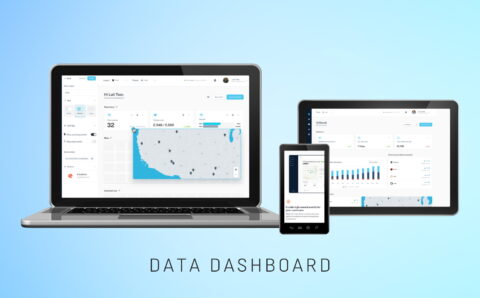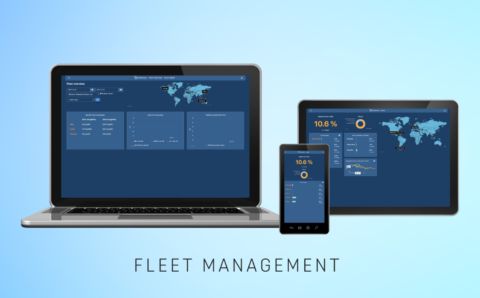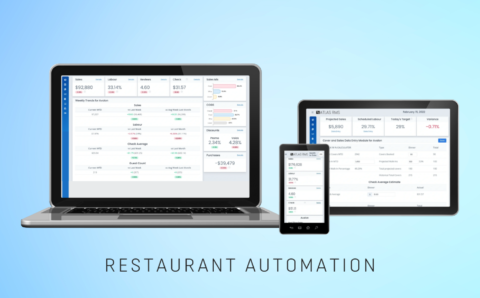
Data keeps becoming a new currency, raising the need to transform information into comprehensive insights. According to Gartner, poor data quality causes companies to lose an average of $12.9 million annually. Business Intelligence (BI) dashboards are solid tools that come in handy to turn raw data into visual insights, helping businesses make smarter decisions and elaborate within their market. Data-driven strategies provide the opportunity to maintain a competitive edge. In these terms, BI dashboards are fully-fledged solutions that allow entrepreneurs to consolidate data from diverse sources, providing an accessible format that represents trends, abnormal tendencies, and opportunities in real time.
The growing significance of data visualization is evident, as Linearity projections indicate that by 2026, 75% of all data will be visualized – a significant boost from 50% in 2021. This trend is further validated by the expected growth of the global data visualization market, which is forecasted to reach $10.2 billion by 2025, up from $7.6 billion in 2021. Furthermore, 68% of organizations have increased their investments in data visualization over the previous two years, which makes data visualization have a profound impact on business growth.
With a clear and concise view of critical metrics, BI dashboards elevate decision-makers to respond effectively to market changes, optimize operations, and drive strategic performance. As a result, they are now a modern business toolkit that helps leaders to adhere to complex environments with data-backed precision.
In this post, you’ll discover the business intelligence dashboard benefits, as well as the core reasons why you should adopt such software for your company to succeed.
Table of Contents:
Real-Time Data Access
BI dashboards offer real-time data visualization, showing the newest information as it becomes available. Immediate access to up-to-date data opens perspectives for quick, informed decisions, which may especially come in use in dynamic industries where timing is often a determining aspect. When decision-makers can see what’s happening in real time, they can respond promptly to arising trends, address issues before they escalate, and catch fresh opportunities as they arise. The impact of BI dashboards on business agility is profound – companies that make use of real-time data can respond to the changes, win the market, stay ahead of the competition, and continuously optimize their operations. Therefore, the BI dashboard is an investment in the ability to act on the most current information, which enhances decision-making and enables businesses to adapt as fast as possible to changing market conditions, driving sustained growth and innovation. Due to this fact, real-time data visualization tools are expected to rise in demand by 50% in the next three years, as Linearity claims.
Enhanced Data Visualization
The primary goal of BI dashboards is to turn complex data into intuitive visuals so that users can seamlessly grasp intricate information. For this, BI dashboards offer a variety of visualization types, such as charts, graphs, heat maps, and scatter plots, to convert raw data into precise, concise representations that highlight vital patterns and trends. The visual approach leverages the brain’s natural ability to process images rapidly, taking as little as 13-80 milliseconds, according to a research paper authored by Mary C. Potter,
Brad Wyble, Carl Erick Hagmann & Emily S. McCourt. Consequently, complex data becomes more comprehensible and actionable, especially in case your platform comprises interactive features, such as filter controls, drill-down/drill-through, hover tooltips, dynamic charts and graphs, etc.
Ordering BI dashboard development services can become a robust strategy to significantly enhance data comprehension, delivering powerful features for communicating core insights in-depthly and effectively. Decision-makers can thus quickly identify opportunities, cater to challenges, and make optimal decisions with greater confidence and speed.
Improved Decision-Making
Centralized data dashboards assist decision-making by assembling all the critical information into a single, accessible platform. BI dashboards become a hub with data aggregated from the required sources. As a result, companies can easily track performance, enabling leaders to make the most optimal, accurate, and timely decisions. Integrated into these dashboards, predictive analytics is crucial in forecasting future trends, determining potential risks, and demonstrating opportunities before they fully emerge. According to the study above, 70% of businesses reported that visuals were “very” or “extremely” influential in their marketing decision-making process. In case you would like to achieve the same successful outcomes, you can reach out to the IT provider that has a proven track record of BI software implementation and is adept at dashboard development process peculiarities.
Put in practice, a retailer using trend analysis can quickly detect a rise in demand for a specific product, allowing them to adapt inventory and marketing strategies to maximize sales. Considering another niche, a manufacturer may detect early signs of equipment failure, warning about the need for maintenance that avoids costly downtime. Thus, BI dashboards provide the opportunity to act based on the latest insights, as well as allocate resources and positions to benefit from the current circumstances.
Customization and Personalization
The standout feature of BI dashboards is their capacity to be customized to fit the unique needs of any business. Organizations profit from this flexibility to adjust dashboards to specific departments, roles, or individual preferences. For instance, a sales team may focus on real-time revenue tracking and customer acquisition metrics. At the same time, the finance department can conveniently keep an eye on cash flow analysis and expense management.
Tailor-made views are the critical aspect of the BI dashboard best practices, providing every team member with the opportunity to personalize the platform and have easy access to the most relevant data. Users can quickly identify tendencies, spot challenges, and improve weak business points by displaying the KPIs and metrics that align with the set goals.
In addition, personalization of these KPIs and metrics as business goals allows companies to adjust their market strategies more efficiently and fulfill the aims faster in a changing environment. The custom approach enhances efficiency and guarantees that strategic decisions are always data-driven and comply with the company’s objectives.
Discover BI Dashboard Tips
Learn best practices to design BI dashboards that deliver actionable insights and elevate your business decisions.
Increased Efficiency and Productivity
BI dashboards significantly elevate efficiency and productivity by automating the data gathering and analysis procedures. Instead of manually surfing within the spreadsheets or creating reports, employees can rely on dashboards that extract data from the necessary sources into a single, coherent view. This brings solid automation opportunities that drastically reduce the time spent on manual reporting, freeing up valuable hours that such routine procedures would otherwise consume.
With readily available and visualized data in real-time, employees can faster grasp critical metrics and make wise decisions without setbacks. Efficiency speeds up decision-making, allowing team members to redirect their focus to higher-value tasks, such as strategic planning, innovation, and customer engagement. As a result, businesses can operate more productively, driving growth and achieving their objectives with greater precision. The benefits of business intelligence dashboards, therefore, lie in the maximization of both individual and organizational productivity. With the streamlined approach and delegated effort, 62% of companies say that data visualization has tangibly elevated their sales and marketing strategies, 64% of companies claim data visualization has enhanced customer satisfaction rates, and 58% of businesses report cutting down operational expenses after implementing data visualization software;
Data-Driven Culture
Regular use of BI dashboards significantly contributes to the adoption of a data-driven culture within organizations. Integrating such tools into daily workflows, businesses encourage employees at all levels to base decisions on factual data rather than personal views and intuition. Therefore, companies can achieve data transparency and enhanced accountability, as metrics and outcomes are visible to all relevant stakeholders.
With BI dashboards in use, teams are aligned with the company’s goals, employing real-time insights to guide their actions. As a result, the respective departments can make informed decisions and quickly adjust strategies as needed. In fact, adopting modern data visualization tools has made it easier for 72% of businesses to access insights faster and more convenientlyб as the Linearity insights mentioned. As a result, organizations can efficiently promote data-driven decision-making, react faster to market changes, and stay ahead of the competition, continuously optimizing their performance based on BI dashboard indicators.
Improved Collaboration Across Teams
Centralized data within BI dashboards significantly enhances collaboration across teams by providing a unified view of critical metrics and insights. When all departments access the same data, it eliminates discrepancies and ensures everyone works from a mutual hub of truth. BI software becomes a source of a shared foundation and helps achieve absolute adherence across the business. Teams can also collaborate more effectively based on projects and initiatives.
Considering a real-life case and proving the benefits of business intelligence dashboards, marketing and sales teams can jointly track campaign performance and customer engagement metrics, enabling them to adjust strategies in real time to skyrocket impact. Furthermore, finance and operations departments can cooperate on cost management and resource allocation by researching the same financial data, ensuring data-based and cohesive decisions.
BI dashboards facilitate cross-functional teams working together smoothly, providing higher innovation and ensuring that every department focuses on the same business goals with synchronized efforts.
Enhanced Forecasting and Planning
Leveraging historical data and trends with BI software can enhance forecasting precision. By visualizing past performance, businesses can quickly detect patterns and dynamic trends that inform future projections. This improves the reliability of predictions and sharpens strategic planning. Decision-makers can respectively anticipate market shifts, adjust resources, and align operations with expected demand.
Aside from that, BI dashboards are advantageous for risk management because they can highlight potential vulnerabilities before they become critical issues. The integration of predictive analytics advances this capability so businesses can model a range of further events and prepare for modifications worry-free.
As the resource mentioned earlier states, 53% of businesses state that data visualization, a core feature of dashboards, has significantly enhanced their product development processes. BI dashboards make it possible to anticipate customer needs and market trends so organizations can innovate as needed and deploy sought-after products, ensuring that their offerings remain relevant and competitive.
Scalability and Flexibility
The scalability of BI dashboards is one of their most valuable advantages, allowing them to stay functional and high-performance when businesses grow and progress. As organizations expand, their data requirements often become more complex. BI dashboards can efficiently handle this and scale to accommodate increasing volumes of data and users. The adaptability of such software ensures that businesses can maintain high performance and insightful analysis, regardless of their size.
Moreover, these dashboards offer the flexibility to integrate new data sources and tools seamlessly. For instance, this may be social media analytics, CRM systems, or financial software so BI dashboards can unify diverse data streams.
As business needs shift, BI dashboards are created to elaborate in a seamless tandem. Users can modify metrics, adjust visualizations, and integrate additional features to reflect changing strategies and aims. Ongoing adaptability enhances operational efficiency and supports informed decision-making in a dynamic business landscape.
Unlock Dashboard Potential
Transform raw data into actionable insights with custom dashboard solutions tailored to your business goals.
Competitive Advantage
Adopting BI dashboards can significantly enhance a company’s competitive edge by providing handy access to vital insights. Timely decision-making is inalienable in many domains, and these dashboards can help organizations track performance metrics and market trends in real time, leading to faster response times. In particular, Starbucks leverages its widely-used loyalty card program and mobile app to collect individual purchase data from millions of customers. By employing this information alongside BI tools, the company forecasts customer preferences and sends personalized offers through the app and email. This makes the benefits of BI dashboards even more evident, allowing this multinational chain of coffeehouses to retain existing customers and motivate them to visit their stores more often, boosting sales volumes.
Another instance is Netflix. With its 148 million subscribers, this vast platform holds a significant BI advantage in the online entertainment industry. This colossal corporation leverages business intelligence in various ways. For instance, Netflix formulates and validates original programming ideas by analyzing data on previously viewed content. The platform uses BI to enhance user engagement, with its highly effective recommendation system driving over 80% of streamed content through targeted content promotion.
To create software as impactful as BI tools for these corporations, it’s crucial to leverage a robust tech stack like Python. Partnering with a trusted tech vendor ensures you choose the best Python dashboard framework set for your BI needs, streamlining processes, reducing costs, and accelerating time to market.

Spontivly
Our cooperation with Spontivly enabled seamless data integration, delivering faster workflows and crucial insights to 70+ companies, enhancing success.

Spark
Spark simplifies fuel data into actionable insights, improving fleet energy efficiency with real-time tracking of fuel consumption and emissions.

Restaurant Management
Created a management tool for restaurants that automates tasks, integrates data from various systems, enhances profitability with accurate KPIs.
Conclusion
Considering all the pros, BI dashboards offer outstanding customization, allowing businesses to tailor their data views to specific needs, streamline decision-making, and align with dynamic goals. The ability to build bespoke dashboards for different departments and roles ensures that everyone in the team can always make use of the most relevant insights for a variety of workflows and goals, elevating efficiency and strategic success.
At PLANEKS, our expertise in creating highly flexible and powerful dashboard solutions is proven in practice by our work on the Spontivly project. By integrating over 120 platforms and enabling tailored data visualization, we have created a solution that has helped 70+ companies achieve 50% faster automation workflows and access to over 1,000 data points.
With our profound team of tech experts, you can build a software solution to elevate your data-driven decision-making, workflow efficiency, productivity, collaboration, and market demand. Contact PLANEKS representatives, and let’s discuss how we can implement a tailored solution to bring maximum profit to your business. Schedule a consultation today to get started.

